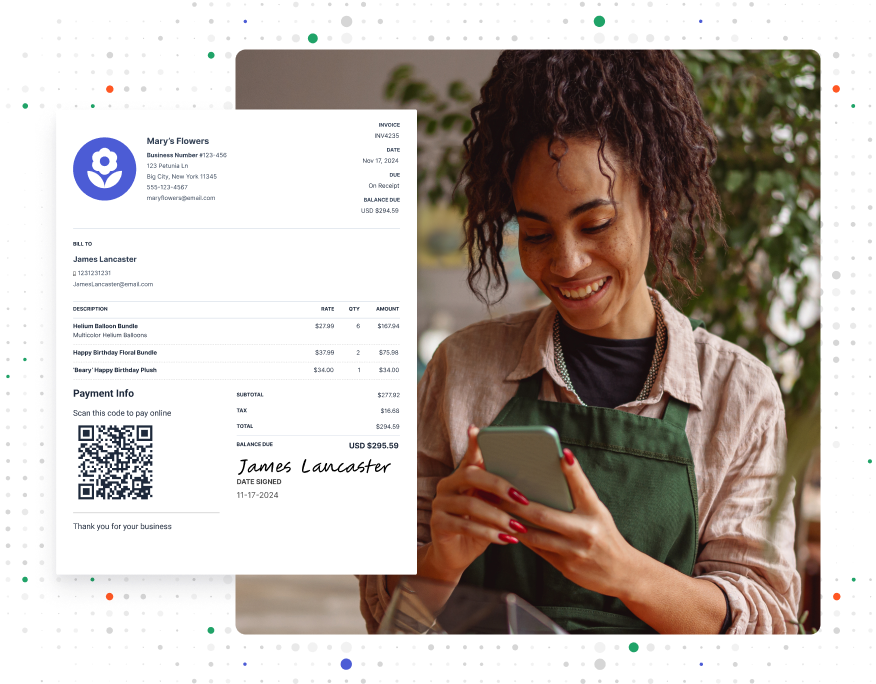What Is Pay-Per-Click Advertising? A Small Business Guide

Traditional advertising is a guessing game about who might see your ads. And that guessing game costs money. But what if you could guarantee every advertising dollar you spend reaches only potential customers?
Pay-per-click (PPC) advertising is what makes it happen. Your ads are shown to consumers searching for your type of product online. You only spend money when they’re interested enough in your product to click.
Here’s a guide to how PPC works and the best platforms for boosting your return on investment.
How Does Pay-Per-Click PPC Work?
With PPC ads, advertisers create campaigns that target specific keywords, and they only pay when someone clicks their ad. For example, a local bakery might have a cost per click (CPC) of $1 for their PPC advertising about custom cakes. If that click leads to a $50 cake order, the PPC campaign has paid for itself many times over.
For paid search PPC campaigns, it all starts with choosing the right keywords for your ads. Advertisers bid against other businesses for the chance to show their ads in sponsored links for certain keywords. It’s similar to an auction.
The position of your ads isn’t just about how much you bid. In fact, your final CPC is often lower than your bid. That’s because Google Ads and other platforms use a scoring system that also influences your CPC, as well as where your ads are placed. These systems rate your PPC marketing efforts based on three key factors:
- Expected Click-Through Rate (CTR). This is how likely people are to click your ad based on past performance.
- Ad Relevance. This is how well your ad matches what people are searching for.
- Landing Page Experience. This is about how well your website gives visitors what they’re looking for after they click.
Many companies choose to focus on search engine PPC ads, but there are other types as well. These include ads displayed on other websites and video ads on sites like YouTube.
RELATED ARTICLE — How To Write a Business Plan: A Step-By-Step Guide
Differences Between PPC, SEM, and SEO

Showing up in search results isn’t magic. It’s marketing. Search engine marketing (SEM) is the umbrella term for all the strategies businesses use to be found in search results. This includes both PPC campaigns and search engine optimization (SEO).
SEO is the part of your SEM strategy. It helps your website show up on search engine results pages organically. It includes activities like researching keywords, creating quality content, and building links from other sites. While this takes a lot of time and effort, you get steady traffic without paying for clicks once you get up and running.
While PPC campaigns also make use of techniques like keyword research, they offer a faster but costlier path to the top of the search results. Unlike SEO’s gradual approach, PPC ads put you above organic listings today — as long as you’re willing to pay for it.
RELATED ARTICLE — What Is Customer Acquisition? Strategies and Costs
3 Pay-Per-Click Benefits
Google Ads reports that businesses earn an average of at least $2 for every $1 they spend on PPC advertising. But that’s not the only way PPC ads deliver value. Let’s take a look:
1. Quick Results
Unlike many other marketing methods that take weeks or months to show meaningful progress, PPC ads start working right away. Your campaigns can bring in targeted visitors the same day you launch them. Plus, most platforms approve your ad copy within hours.
2. Measurability
PPC marketing lets you track every dollar you spend and what it’s doing for your campaign. You can see exactly which ads bring in sales, how many people click on them, and what those visitors do on your website. This helps you make smart decisions about where to put your budget.
3. Budget Flexibility
As an advertiser, you have complete financial control over your PPC management. You can adjust your spending at any time, pause campaigns when you need to, and restart them whenever you’re ready. There’s no minimum spend required, and you can adjust your budget based on what works.
Types of PPC Ads
Your PPC ads can show up just about anywhere potential customers spend time online. Here are some of the most common types of ads:
Search Ads
When people type keywords into a search engine, PPC search ads pop up at the top of the results. These text-based ads work well because they reach people actively looking for what you’re offering. For example, if you’re targeting “best contractors in Tampa,” and someone searches “best contractors in Tampa,” you may show up at the top of their results.
Display Ads
You can run PPC display ads on websites, in apps, and across the internet in places that relate to your industry or products. They come with visual aids like images and even interactive elements that encourage people to click.
Video Ads
Video campaigns run on platforms like YouTube and Instagram. These PPC ads can play before, during, or after other videos. Some are short spots that viewers have to watch before getting to the main content. These usually last just a few seconds. Then, there are longer messages viewers can skip if they’re not interested.
Remarketing Ads
Remarketing PPC campaigns show your ads to people who have already encountered your website or social media channels. These highly targeted PPC ads can appear as any of the types of ads we’ve talked about so far. They help you stay connected with potential customers who have shown interest but haven’t made a purchase yet.
RELATED ARTICLE — Communication Methods Within a Business and How To Improve Your Skills
3 Top Pay-Per-Click Campaign Platforms

Every online PPC advertising platform has its own strengths and weaknesses. Knowing what sets them apart will help you get the most bang for your buck. Here’s what you need to know:
1. Google Ads
In PPC advertising, Google Ads is the heavyweight champ. Google’s scale and market domination make this platform the first place you should target your PPC marketing efforts.
Google Ads offers a few different ways to get your message out there. You’ll find text ads in search results, video ads on YouTube, and even spots in Gmail.
The platform works great for reaching people who are actively searching, but it might not be the best choice if you want to build new demand. Platforms like Instagram and TikTok provide more engaging experiences for building brand awareness.
The average cost per click in Google Ads for 2024 is $4.66, though prices vary widely by industry. Arts and entertainment advertisers, for instance, might successfully bid less than $2 per click. Attorneys and legal services often bid close to $9.
2. Microsoft Advertising
Microsoft’s PPC platform lets you advertise on Bing, the world’s second-largest search engine.
Microsoft Advertising focuses mainly on text ads in search results. While its market share is smaller than Google’s, it offers access to an older, wealthier audience at a lower cost per click. This combination of wealthy users and lower costs makes Microsoft Advertising particularly valuable for fields like finance and banking.
If you’re marketing to a younger audience, you may want to look elsewhere. Areas like fashion tend to do better on other platforms where younger, more tech-savvy users spend their time.
The average cost per click on Microsoft Advertising is $1.54, with most businesses paying between $1 and $3 per click.
3. Meta Ads
Meta lets advertisers run PPC campaigns across both Facebook and Instagram. This gives you access to billions of potential customers at once.
Meta Ads really shines when it comes to visual content. You can create image ads, video ads, carousel displays, and even interactive stories. The visual focus of Facebook and Instagram makes these platforms perfect for showing off products and services. Local businesses, online stores, and travel companies often see great results here.
That said, technical products and industrial B2B companies might struggle to connect with users. These tend to perform better on business-focused platforms like LinkedIn.
Meta’s average cost per click is just $0.77, with most businesses paying between $0.50 and $1.
FROM ONE OF OUR PARTNERS — How Can Google Ads Help You Advance Your Business Goals?
3 Tips for Launching and Managing a Pay-Per-Click Campaign
Setting your PPC campaigns up for success starts with these essential steps:
- Know Your Audience. Before creating your first PPC ad, learn everything you can about your potential customers. Study their interests, where they spend time online, and what your competitors are doing to reach them. This helps you put your money in the right place.
- Research Your Keywords. Start with a list of keywords that match what potential customers are searching for. Include specific, detailed phrases you can compete for (known as long-tail keywords) that show clear buying intent.
- Track and Improve. Once your PPC campaigns are up and running, closely watch which ads perform best. Adjust your keyword bids based on what’s working. Keep testing new approaches to improve your results.
FROM ONE OF OUR PARTNERS — Optimize Your PPC Campaigns with These Tips
Turn Clicks Into Customers With Invoice Simple
PPC ads get customers in the door. Easy payment options turn those clicks into conversions.
Give your customers flexible online payment options with Invoice Simple. Send digital invoices via email, SMS, or by manually sharing a link. You can also make it easy for your clients to pay you instantly from a paper invoice by turning on the Invoice Simple Payments QR Code.
Start Your First
Invoice Today
Create customized and professional
invoices and connect with clients
